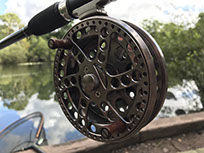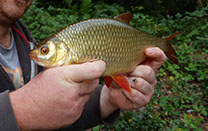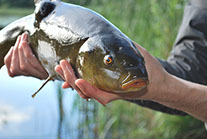MEMBERSHIP

For full details on how to join and the rates for 2018/19
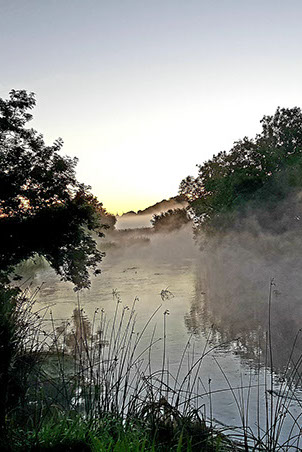
Membership details
WDAC VENUES
Further details on all of our waters and concessions.
Venue information
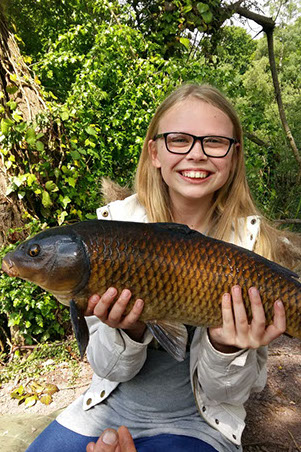
JUNIORS PAGE - COMING SOON!
A page of the website purely for our younger members.
Coming soon
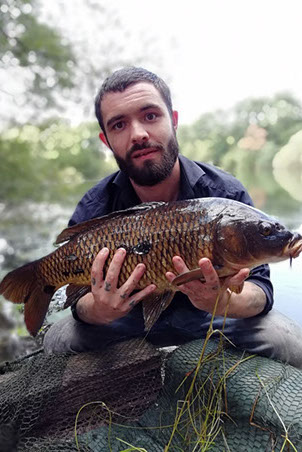
STICKY BAITS COMP
£175 worth of Sticky Baits prizes of for grabs!
Enter comp here
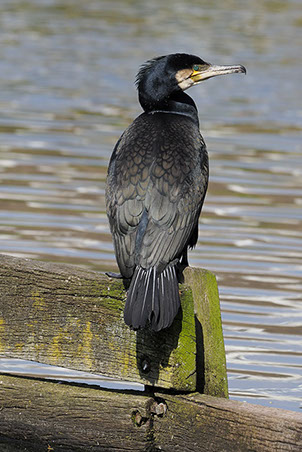
CORMORANT WATCH
YOUR club needs YOUR help to report sightings of cormorants
Report here
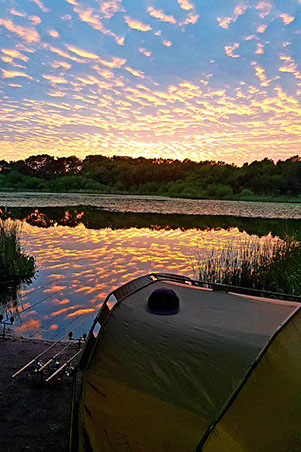
WDAC PHOTO COMP
All the info you need to enter our annual competition.
Enter here
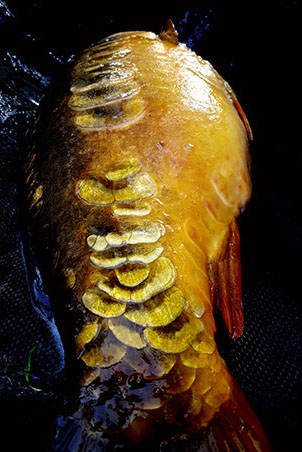
STICKY BAITS COMP
£175 worth of Sticky Baits prizes of for grabs!
Enter here
WORK PARTIES
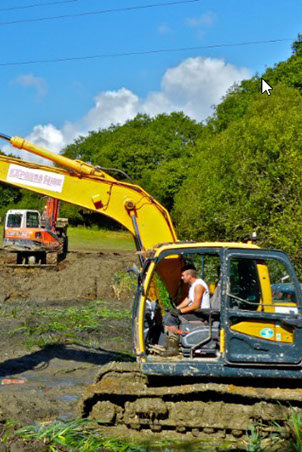
Register your interest to help maintain our waters.
Work party details
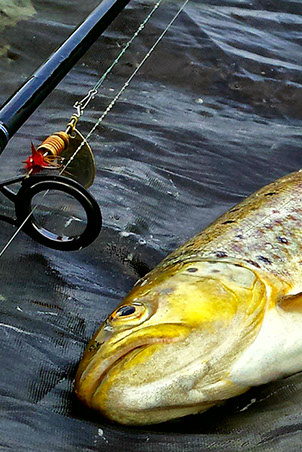
WDAC offers our membership the chance to fish two trout waters, Winterborne Zelston and Rawlsbury
GAME SECTION
Game section
A helicopter set-up is perfect if you're not 100% on the bottom you're fishing on and can be a very fish-friendly method if done correctly.
- A number of manufacturers now supply drop off kits that allow the lead to be dropped if the situation requires it. This is the best way to set this arrangement up if you using short rigs - to avoid the lead bouncing around the fishes head whilst playing it or indeed to avoid the lead becoming snagged whilst playing the fish. The example shown here utilises a fixed lead
- Its essential that the rig can come free of either the mainline or the leader in the eventuality of a break-off. Make sure that a drop-off style bead is used and (if you're using a leader) that the rig can pass over the knot that the leader is attached by. Again - test it on the bank before you cast out.
- After every fish check that where the rig meets the lead the line/leader is not damaged - this section can become weak over time and fish can be lost (and trailing a rig) if this part of the line fails.
Helicopter set-up
A running-lead set-up is the simplest rig set-up and can be useful if fish start to use the weight of the lead to eject your rig.
A running rig should be exactly that - the lead should not be fixed so that it cannot slide off the line if the fish becomes snagged or the mainline breaks.
The biggest mistake made by inexperienced anglers is when a splitshot is crimped onto the mainline above the lead. This is absolutely not fish-friendly and should not be used under any circumstances. The lead must be able to slide off the mainline in the event of a breakage.
Running lead set-up
The chod rig is a form of helicopter-style set-up that uses a small 'chod' section positioned above the lead - perfect for fishing over debris or weed. It's also the rig that is set up incorrectly the most often.
The same rules for the chod rig apply as the helicopter rig - making sure that the rig can escape the mainline/leader is the most important aspect.
As the chod rig is so short it is much better for the fish if the lead is ejected every time as this prevents the lead from being close to the fishes mouth and eyes whilst playing it to the bank, though a fixed lead is acceptable.
A common mistake using a chod rig is to peel too much line off the spool after casting, in order for the rig to settle correctly over debris. This isnt such a problem in open water, however if fishing close to snags this potentially allows a fish to become entangled with little or no indication on the bank.
This set up is fantastic over weed but shouldn't really be cast close up to snags.
Chod rig set-up
The image here shows a drop-off lead system that can be set up to either retain the lead on a take, or for it to drop off it needs be. This can be used for both the helicopter and chod style set-ups.
This style of end-tackle is now available from numerous manufactures and is sold locally.
Dropping the lead shouldn't be done as a matter of course - it's important that this used only when the situation dictates it should be - i.e when you need to avoid a fish becoming snagged up in foliage, trees etc.
Drop off mechanism
More often than not a solid bag approach uses a running in-line lead inside and is technically therefore a running rig set-up. This is an ideal solution if you are concerned about weed or debris on the bottom as this method will present almost anywhere.
In order for the rig to fit neatly inside the bag, the rig itself is usually short to aid hooking. We would encourage the use of rig tubing while using this method, again as it protects the eyes and flanks of the fish while playing it into the bank.
Running lead set-up - PVA bag
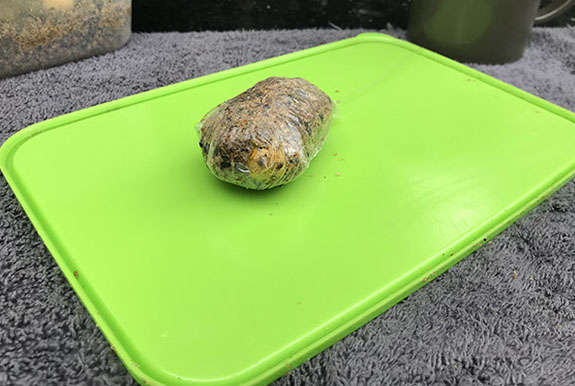
When you arrive at a venue, it's usually a case of trying to locate the fish whilst considering the positioning and movements of fellow anglers.
What's often missed and is more important, is 'can you fish safely' from your chosen swim? You need to consider the safety of yourself and your chosen quarry. For instance, it's not safe from a fish perspective to set up next to numerous snags using light rods and light line whilst targeting big carp. Your kit needs to be able to stand up to the likely test it'll face. It's also not safe to fish up to snags with baitrunners turned on and a pod that isn't firmly anchored down. So before you even cast out, please consider what will happen should you hook into a large fish, and always ask the question...'will you be able to land the fish safely?'
Lastly, check and double check al of your knots. It poses a risk to wildlife and to the fish if a knot fails, something that can easily be prevented. Not to mention the risk of losing the fish of a lifetime in arguably the most frustrating way possible!
First and foremost
This is certainly one of the more commonly used lead arrangements and encompasses a few components that need to be set up correctly. The image here shows a two-piece lead clip system. The rig tubing heads up the mainline from the sleeve end and the rig is attached to a swivel at the opposite end.
You can see from the image here that the lead is hooked on using an oversized swivel and that the rubber sleeve is pushed on just a few notches. These two elements will ensure that should the lead become snagged, it will come free of the clip. This is how to set up a lead clip if you are fishing close to snags such as overhanging trees and lilly pads etc. when pushing the sleeve over the clip, ensure this is moistened to assist in the release.
Alternatively if you are fishing open water and have no need to drop the lead, then pushing the sleeve on firmly will ensure you always reel in the lead. IMPORTANT - if this is the case, you must ensure that the swivel at the rig end of the clip can slip out of position. You can easily test this on the bank even before casting out. Hybrid lead clips must be used slightly differently - please read the manufacturers instructions prior to using these.
Please note which way the sleeve points - having the sleeve point the other way is guarantees almost that the lead will fail to come off and is a dangerous way to attach this set-up.
The lead clip set-up
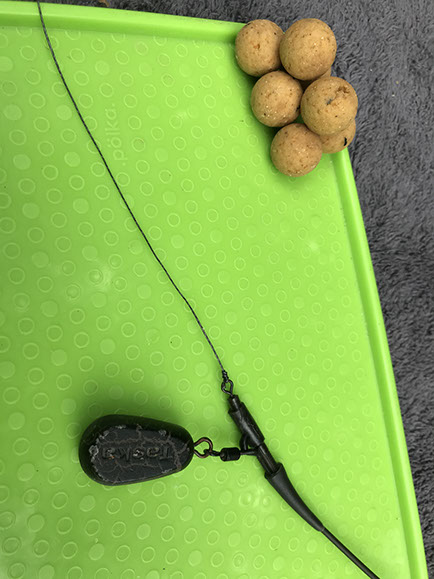
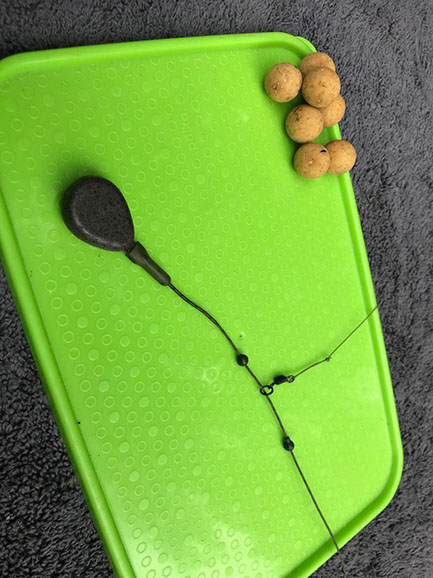
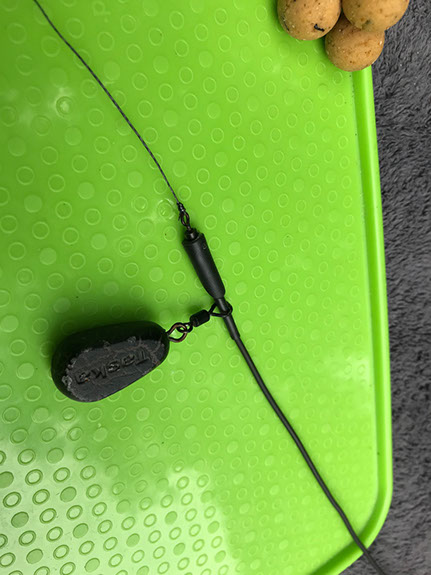
This example shows a drop-off style in-line lead.
This can be used both on it's own or as above inside a solid bag. This system works on the basis that the mainline/leader does not pass inside the lead - it is secured around the outside.
To test the safety of this rig, simply hold the rig by the hook and shake before you cast out. If the lead falls off, you know that the set-up is correct.
Running lead set-up - drop-off
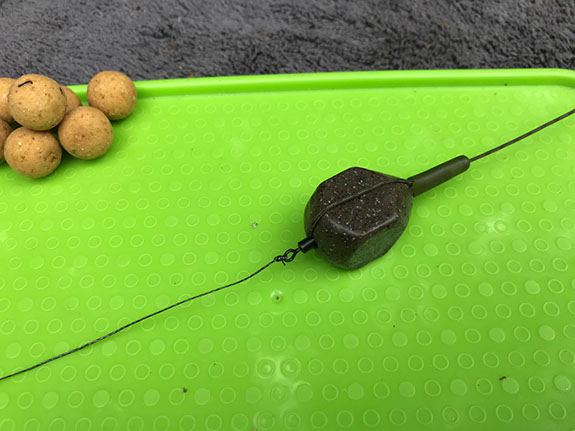
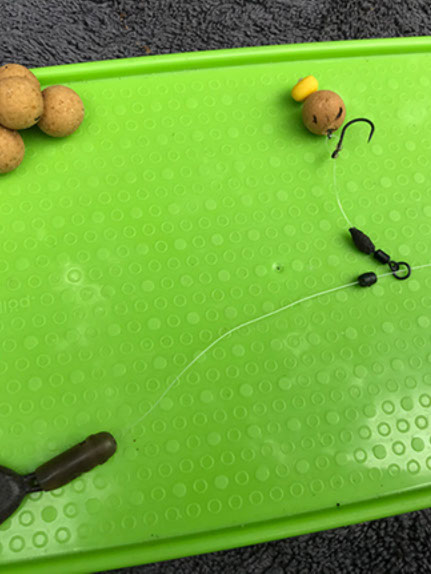
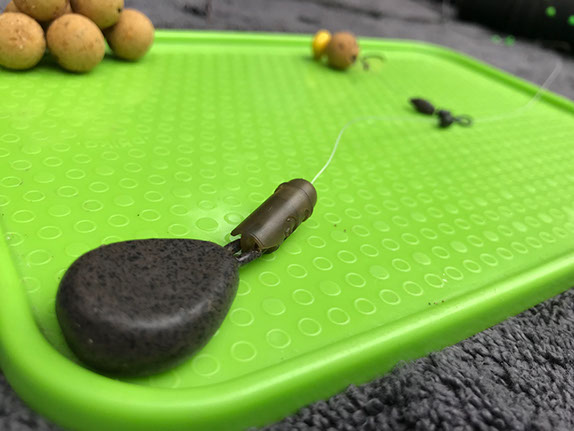
Fishing tight up to snags presents a number of problems and needs to be thought about carefully. Sometimes the fish dictate that this is the only place you'll catch them.
- Start off with just a bare lead. You can then keep casting using your line clip to avoid hitting the snag and ensure you are as close as is safe to do. This almost eliminates the risk of snagging your rig - posing a threat to wildlife in the instance of snapping off.
- Ensure that your reels are locked up tight - really tight. Carp will head for the nearest shelter almost every single time and if the free-spool facility or drag is loose on your reel, you stand a really good chance of loosing the fish and leaving the fish trailing a rig.
- Ensure that your bank sticks are pushed firmly into the ground so that your set-up is not taken into the lake. Whilst using a pod, you can use stage stands or even bivvy pegs to secure your rests.
- Consider the use of grip butt rests and snag ears to ensure your rod is not pulled into the lake.
- Ensure you are always close to your rods and NEVER leave them unattended. It's poor practice, more so when snag fishing.
- Whilst night fishing, it's wise to avoid snag fishing altogether as it's almost impossible to get to your rods quickly enough. Fish often venture out of these areas at night and we would advocate selecting different spots.
Fishing close to snags
Fishcare homepage
SUBSCRIBE TO OUR NEWSLETTER


COPYRIGHT WDAC 2021
TERMS AND CONDITIONS
DESIGNED BY J NASH



